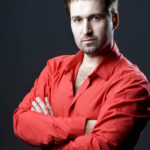| 11. 01. 2024 19:00 p.m. |
| Kino Vesmír |
| from 450 CZK |
M3 New Year’s Concert II
The Janáček Philharmonic will welcome the New Year with the most popular Czech opera, a position held by Bedřich Smetana’s Bartered Bride since its premiere. Also fragments from the opera Julietta by Bohuslav Martinů and the New World Symphony by Antonín Dvořák.
Bedřich Smetana
The Bartered Bride, overture to the opera
Bohuslav Martinů
Fragment from the opera Julietta H 253A1
Antonín Dvořák
Symphony No. 9 in E minor, Op. 95 B 178 “From the New World”
Kateřina Kněžíková – soprano
Richard Samek – tenor
Jiří Hájek – baritone
Janáček Philharmonic Ostrava
Vassily Sinaisky – Chief Conductor of the JPO
The Janáček Philharmonic will celebrate the arrival of the New Year with works by three Czech musical giants. Bedřich Smetana’s The Bartered Bride has held its position as the most popular Czech opera since its premiere in 1866. The spectacular, Mozart-like, sparkling and in the true sense virtuoso overture is still one of the favourite performances of Czech and international orchestras.
Fragments from Bohuslav Martinů’s Juliette present a cross-section of the work, which the composer created in 1939 for a performance on Paris radio. The surrealistic libretto by French playwright and poet Georges Neveux brings us into the illusionary world of bookseller Michel and his unreachable femme fatale named Juliette. The second of the fragments is a dreamlike image of a forest, where Michel’s real memories clash with Juliette’s fantastical imagery. The scene shows how thin the line between reality and fiction can be.
By creating the New World Symphony, Antonín Dvořák gave birth to one of his most profound and beautiful compositions. The work was composed during Dvořák’s American stay in 1893 and reflects not only impressions of American nature and lifestyle but also inspiration from African American and Native American folk music. The lively musicality brought the work extraordinary success. The moving melody of the English horn in the Largo of the second movement has become one of the most famous in the world of symphonic literature.




